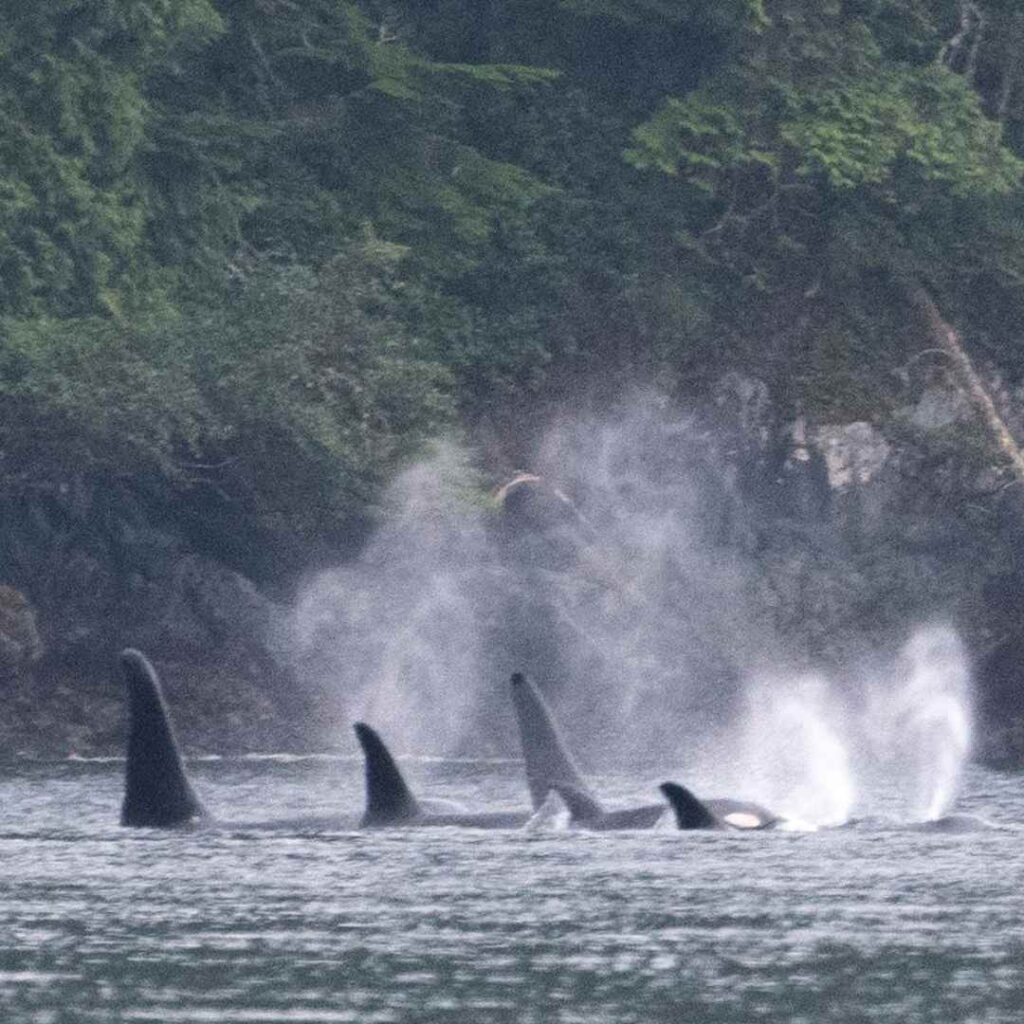Every summer, the exhalating waters of Johnstone Strait come alive with the calls and movements of the Northern Resident Killer Whales. These orcas, known for their tight-knit family structures and complex social behavior, are a vital part of the marine ecosystem. Observing them in their natural habitat is a breathtaking experience, but it also comes with great responsibility. Understanding their family structure and how we can help protect them is key to ensuring their future.
Family First: The Clan and Matriline Structure
The Northern Resident Killer Whales are organized into three clans—A, G, and R Clans—each with its own unique vocal dialect. Within each clan are pods made up of matrilines, where the eldest female leads her extended family. These matrilines consist of her offspring and their descendants, forming bonds that can last a lifetime.
During the summer months, these orcas roam the nutrient-rich waters of Johnstone Strait in search of Chinook salmon, their primary food source. Each pod has distinct travel patterns and feeding behaviors, which scientists and wildlife enthusiasts have come to recognize and study over the years.
Why Giving Them Space Matters
While it’s tempting to get close to these majestic animals, respecting their space is critical for their health and survival. Disruption caused by boats, noise, and human activity can interfere with their communication, feeding, and resting behaviors. These interruptions may seem harmless, but over time they take a toll on the population’s well-being.
By giving these whales the room they need to thrive (min. of 400 m), we can help ensure that future generations will continue to witness their beauty.
How You Can Help: Simple Steps to Support Orca Survival
Protecting the Northern Resident Killer Whales starts with the choices we make every day. Here’s how you can contribute:
1. Choose Sustainable Seafood
Support the recovery of Chinook salmon populations—the primary food source for these orcas—by choosing sustainably harvested seafood. Look for certifications like Ocean Wise or MSC (Marine Stewardship Council) when buying fish.
2. Practice Eco-Friendly Boating and Whale Watching
- Maintain a safe distance of at least 400 meters from orcas.
- Reduce boat speed to minimize noise pollution.
- Choose ethical whale-watching operators that prioritize wildlife safety and adhere to regulations.
3. Go Green at Home
- Use eco-friendly cleaning products to reduce harmful chemicals that end up in our waterways.
- Conserve water and reduce plastic use to help protect the marine environment.
- Support local conservation efforts and spread awareness about the importance of preserving orca habitats.
Our Responsibility as Stewards of the Sea
The Northern Resident Killer Whales are more than just iconic marine creatures—they are an integral part of the coastal ecosystem and a symbol of wild beauty. By learning about their lives and making conscious choices, we can ensure their population grows stronger and more abundant.
Next time you’re on the water or making decisions at home, remember that small actions add up. Together, we can protect these magnificent animals and the waters they call home.
Let’s protect the wild, one step at a time.
Want to learn more about these incredible creatures? Stay tuned to our Orca Blog for more stories, updates, and tips on how to live in harmony with the natural world.
